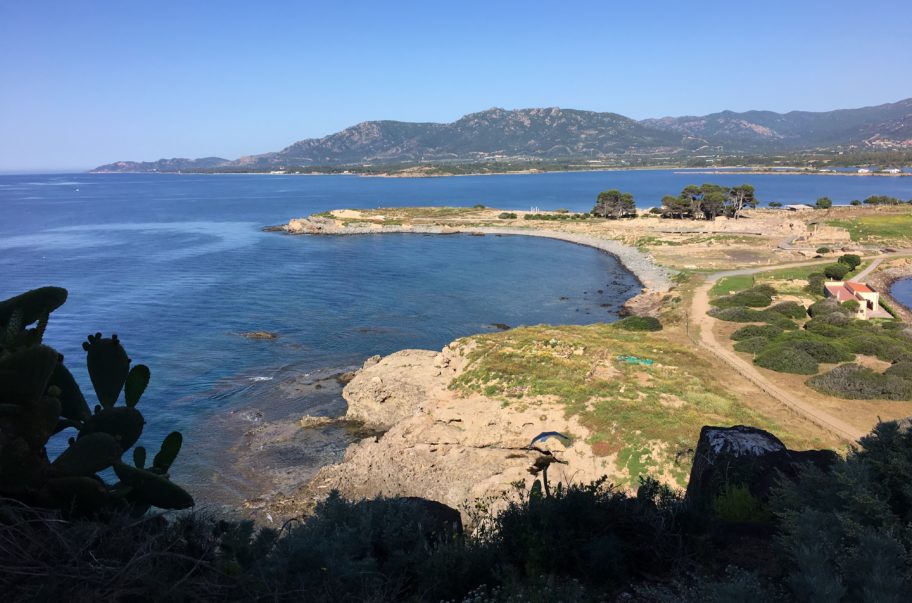Corpo Pagina
The great prosperity of the III century seemed to decline gradually in the IV century, a period which was problematic for the whole Roman and Mediterranean world. Even if the paving of the harbour road was constantly renovated, the inhabited area contracted. Toward the North-West there was a landscape scattered with ruins, within which the raising of new craft activities has been well shown. In the central areas, partitions were pulled in most of the houses, paying particular attention to utility and no longer to decorum. Repairs, visible everywhere and made possible by a growing quantity of rubble, increased.
Once the porticoes were permanently occupied, the theatre was abandoned too: remains of hearths in which sheep meat was boiled around 400 AD have been found under the vaults of the entrances.
In that framework, however, new major urban interventions were made: the reconstruction of the sacred building on the “Punta del Serpente” (Snake Promontory), towards the south, and the demolition of the central district, probably in ruins, to create a scenic access road.
Even the central thermal baths changed: when the access from the South was closed, a new long mosaic corridor connected the original frigidarium with the theatre area, passing through the remains of the old noble houses and next to the reservoir (Castellum Aquae).
The exact dating of these complex interventions is not yet certain, as the investigations are still ongoing.
On the other hand, the date of a last phase of urban development, certainly wanted by the central power between 420 and 430 AD, is clearer. At the same time, an inscription testifies the restoration of the aqueduct, evidently in ruins, requested by Theodosius II. Expeditions were then prepared against the Vandals of Africa and the southern ports of Sardinia were renovated as naval bases for the departure of the fleet.
Around the area in which there was the building of the central baths and along the coastal road to the port, which remained the centre of the city activities, the rubble were cleared and new houses were built.
The craft activities were transferred to the city: each house had its own oven and in the frigidarium of those that had been the small baths, full of mosaics, a furnace was built.
The “Terme a Mare” (seaside thermal baths) became a fortress in defence of the port, as the archaeologist Carlo Tronchetti saw when he excavated it in 1977.
The new houses show a high constructive technique, compatibly for the standards of those times: around the central courtyard there were one or more master zones, the workshop, the stable and the warehouses.
Even this late construction phase soon declined. The inner courtyards were connected to each other by new openings, forming a complex system of alleyways and small dirt squares on which humble houses of very few rooms, obtained within the Theodosian houses, were opened.
There were very few new facilities. The materials found testify that life in some way continued at least until the VII century AD and later receded definitively in the safest heights far from the coast. For the following centuries in the area of Nora there are only traces of pastoral presence and of removal of building materials. At least from the XI century AD the church dedicated to the martyr Sant’Efisio, located in the area of the Roman necropolis beyond the isthmus towards Pula, became the new pole of the city.
Testo di Jacopo Bonetto / Text by Jacopo Bonetto
Traduzione di Gabriele Demurtas e Giusy Pitzeri / Translation by Gabriele Demurtas and Giusy Pitzeri

